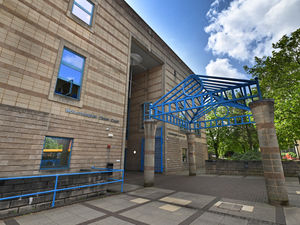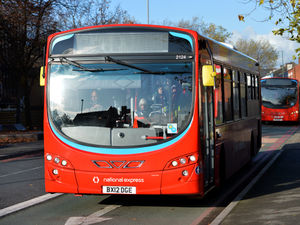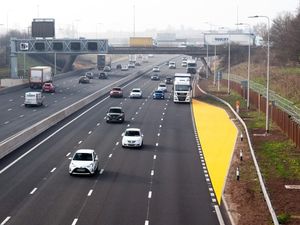Call to honour the Black Country's forgotten wartime Cockleshell Hero
Eric Fisher seemed a pretty unremarkable fellow.

A printer working in the Black Country, he led a quiet life.
He lived with his wife in an ordinary house in suburban West Bromwich, worked for some years at the Joseph Wones print works. It is thought he died a widower sometime in the 1990s, when he would probably have been in his 70s, although the details are sketchy.
Yet he had a remarkable claim to fame: he was a real-life Cockleshell Hero.
While everybody remembers the names of Trevor Howard and Christopher Lee, who starred in the film about the heroics of the commandos of Operation Frankton, the name of Eric Fisher has been all but forgotten. Even in his home town he is virtually unknown.
He is named in a plaque on the promenade at Woodside Ferry, in Birkenhead, which was recently spotted by West Bromwich expatriate Arthur Harris.
"I was born in West Bromwich, went to school and lived all my working life there, and this is the first time I have ever heard anything about Marine Fisher," says Mr Harris, who now lives in Wales.
"I have never seen anything about him in West Bromwich."
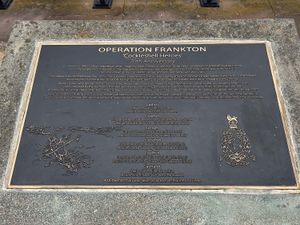
Operation Frankton, which took place 80 years ago this year, was one of the most daring operations of the Second World War, credited with shortening the outcome of the conflict by six months.
Under the cover of darkness, on a freezing night in December 1942, the British submarine HMS Tuna surfaced in the Bay of Biscay, 10 miles from Nazi-occupied Bordeaux.
Five collapsible canoes were passed out of the submarine, and loaded with explosives ready to row behind enemy lines to destroy German cargo ships crucial to the war effort.
It was a tale of incredible bravery and derring-do. The commandos who volunteered for the operation would have known that the odds of them returning home to tell the tale were somewhat slim.
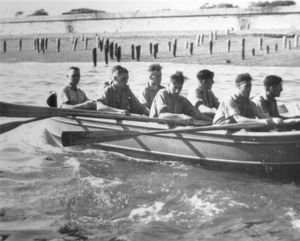
The plan was for the Royal Marines to row their flimsy canoes up the Gironde Estuary to Bordeaux harbour, where they would attach limpet mines to German cargo ships carrying crucial supplies.
They would then sink their canoes to avoid detection, and make their escape on foot to neutral Spain.
The young commandos would have known the chances of living to tell the tale were slim, but they nevertheless volunteered for the audacious plan.
And so did Eric Fisher, and his partner Bill Ellery. But a mishap during disembarkation saved the pair from almost certain death – but left the Black Country man inconsolable.
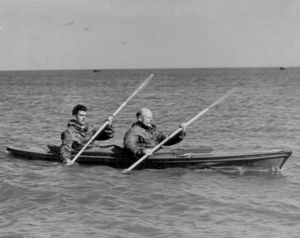
In the real Operation Frankton, HMS Tuna actually carried a team of 13 volunteers. The plan was for 12 of them to make their way to the harbour in six collapsible kayaks, with the 13th man – Marine Norman Colley – acting as a reserve.
The kayaks, given the codename Cockle, were 15ft long – about the size of a family car – had flat bottoms, and canvas sides which could be collapsed for easy storage in the submarine. Then, as the sub was ready to surface, they could be hauled out through the torpedo hatch.
The team was split into two divisions: A Division was led by commanding officer Major Herbert "Blondie" Hasler, in a boat called Catfish, with Marine Bill Sparks, Corporal Bert Laver and Marine William Mills in Crayfish, and Corporal George Sheard and Marine David Moffatt in kayak Conger.
B Division was supposed to have been led by Lt John Mackinnon and Marine James Conway in Cuttlefish, with Sgt Samuel Wallace and Marine Robert Ewart in Coalfish, and finally Marines Ellery and Fisher in kayak Cachalot. But as the fragile boats were preparing for launch, Cachalot knocked against the hatch clamp, tearing an 18in hole in its canvas side. Hasler ordered Fisher and Ellery to abort their part in the mission, and despite their pleadings they were left to stay on HMS Tuna with Colley.

Keith Chappell, who worked with Mr Fisher at Joseph Wones printworks from about 1965 to 1972, says his former colleague was distraught at being left behind on the raid.
“I will always remember him telling me how, when he couldn’t go with his mates, he just sat down and cried,” Mr Chappell, from Halesowen, said in a 2011 interview.
“He was really heartbroken at being left behind. He cried his eyes out. I worked next to him for years and he told us all about the raid.”
After the operation, Eric Fisher returned to his unit and served with the Royal Marines for the rest of the war, before resuming his pre-war career as a printer.
The raid was a huge success, putting six ships out of action, but of the 10 who rowed up the Gironde, only Hasler and Sparks survived.

Sheard and Moffat froze to death, after Conga capsized, forcing them to swim to shore. The remaining six were shot by the Germans on the instructions of Hitler, who had decreed that commando operations fell outside the rules of the Geneva convention.
The memorial in Birkenhead was unveiled 10 years ago by the late Liberal Democrat leader and ex-commando Paddy Ashdown, to mark the 70th anniversary of the raid. During the unveiling ceremony, Lord Ashdown said: “This was one of the most dangerous and daring raids of World War II, and pitted 10 Marines against 10,000 German troops.
"The young men who took part knew there was a very good chance that they would not return, and they were prepared to risk their lives at a time when our nation's survival was at stake."
But in a 2011 television documentary, Ashdown also described Frankton as "a Whitehall cock-up of major proportions" due to a simultaneous mission to sink the ships in Bordeaux, led by Claude de Baissac of the Special Operations Executive. A combination of secrecy and lack of co-operation between the different government agencies meant that Hasler's team and Combined Operations knew nothing about each other's efforts, and De Baissac was preparing to take explosives onto the ships when he heard the explosions of Hasler's limpet mines.
The loss of the opportunity for Hasler and de Baissac to work together to strike a harder blow against the Germans in a combined operation led to the setting up of a Controlling Officer at Whitehall, responsible for avoiding inter-departmental rivalry, duplication or conflict.
While Eric Fisher never did make it to Bordeaux, he had volunteered and spent months training for a mission he knew would probably have cost him his life, and Arthur Harris thinks it his time he was recognised in his home town.
"I have never seen anything about him in West Bromwich, no plaques, or buildings named in his honour, nothing," he says.
"There are no plaques, or buildings named in his honour, nothing," he says.
"I think this is scandalous and it's about time something was done to honour his memory in his home town."

